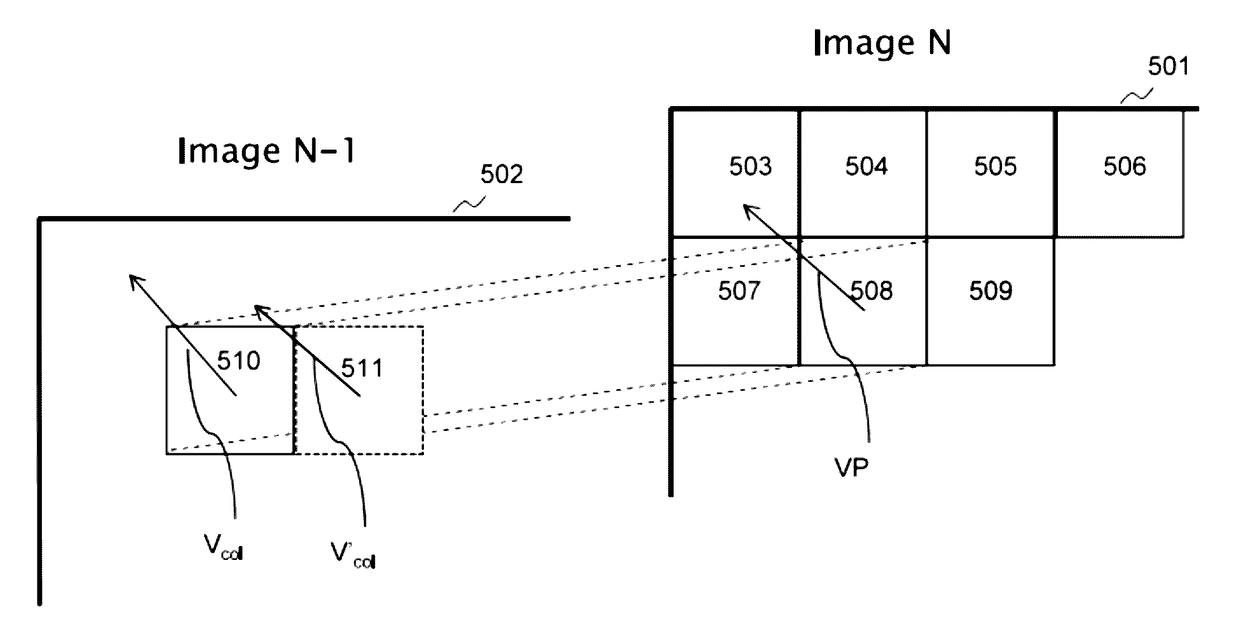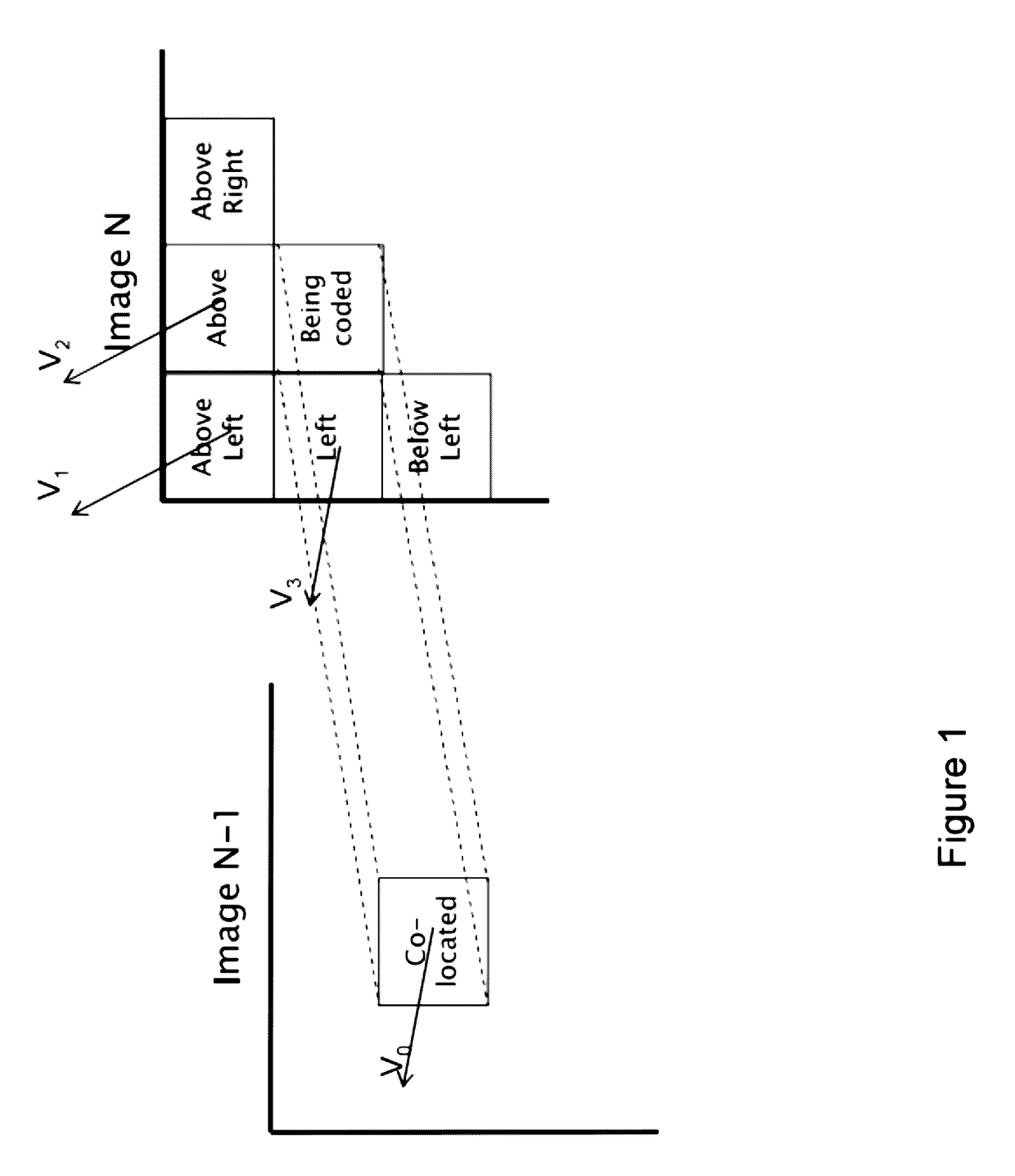Video encoding and decoding with improved error resilience
a video and error resilience technology, applied in the field of digital signal processing, can solve the problems of inability to correctly parse the bitstream, the method is very vulnerable to transmission errors, and the decoder cannot correctly parse the data
- Summary
- Abstract
- Description
- Claims
- Application Information
AI Technical Summary
Benefits of technology
Problems solved by technology
Method used
Image
Examples
first embodiment
[0145]In a first embodiment, MVP′curr is set to the motion vector residual Vres encoded for MVPcurr. Taking the example of FIG. 5, if MVPcurr is the motion vector (VP) of block 508, which is encoded using the motion vector Vcol of the co-located block 510: MVPcurr=Vcol+Vres, where Vres is the motion vector residual actually encoded for block 508. Then, in this embodiment, MVP′curr is set to Vres.
second embodiment
[0146]In a second embodiment, MVP′curr is set to a predetermined vector, for example to the value (0,0).
third embodiment
[0147]In a third embodiment, a value which is predetermined or which can be retrieved by the decoder is added to the motion vector residual to obtain MVP′curr.
[0148]For example, Vres is added to another motion vector of S1, if any, which is encoded without dependencies on other slices. A predetermined order of parsing the set of vectors of S1 to find such a suitable motion vector predictor can be applied, both at the encoder and at the decoder. Taking the example of FIG. 5, if MVPcurr is the motion vector associated with block 508, the motion vector block 504 can be used, which is the first motion vector encoded without temporal dependency encountered S1 for example.
[0149]Alternatively, a motion vector V to be used for the prediction can be transmitted from the encoder to the decoder in the slice header. Then, MVP′curr=Vres+V. The motion vector V can be computed as one of the following:[0150]the average or the weighted average of the motion vectors of the co-located slice of slice t...
PUM
 Login to View More
Login to View More Abstract
Description
Claims
Application Information
 Login to View More
Login to View More - R&D
- Intellectual Property
- Life Sciences
- Materials
- Tech Scout
- Unparalleled Data Quality
- Higher Quality Content
- 60% Fewer Hallucinations
Browse by: Latest US Patents, China's latest patents, Technical Efficacy Thesaurus, Application Domain, Technology Topic, Popular Technical Reports.
© 2025 PatSnap. All rights reserved.Legal|Privacy policy|Modern Slavery Act Transparency Statement|Sitemap|About US| Contact US: help@patsnap.com



